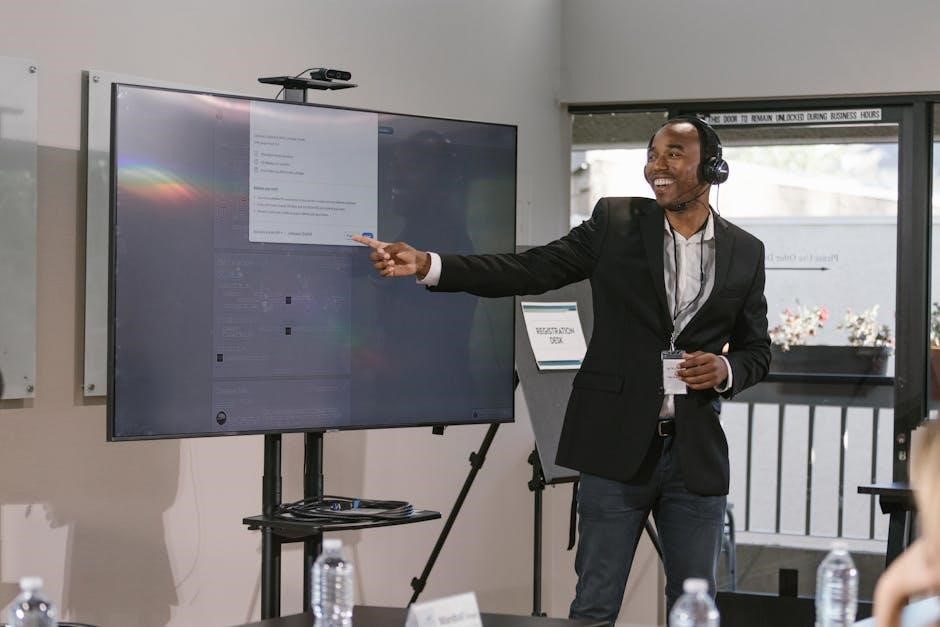Uncle Julio’s Gluten-Free Dining Guide
Embark on a flavorful journey at Uncle Julio’s, where authentic Mexican cuisine meets gluten-free needs. This guide unveils the options available for diners seeking to navigate the menu while avoiding gluten. Discover delicious choices and tips for a satisfying experience.
Uncle Julio’s offers a range of gluten-free options for those with dietary restrictions. While they may not have a dedicated gluten-free menu, many items can be modified to accommodate gluten sensitivities. This includes utilizing corn tortillas as a substitute for flour tortillas in dishes like fajitas and tacos; Servers are generally knowledgeable about ingredients and can assist in identifying suitable choices.
Diners can enjoy appetizers like guacamole and queso blanco, ensuring to confirm ingredients with the server to avoid any gluten-containing components. Main courses like the honey chipotle salmon (without the honey glaze) and taco salads (without the tortilla) can also be adapted for gluten-free diets. It’s crucial to communicate dietary needs clearly to ensure proper preparation and avoid cross-contamination;
With careful selection and communication, a satisfying and flavorful gluten-free meal is attainable at Uncle Julio’s. Remember to inquire about marinades and sauces, as some may contain gluten. By exploring the available options and working with the staff, you can enjoy the authentic Mexican flavors Uncle Julio’s has to offer.
Does Uncle Julio’s Have a Dedicated Gluten-Free Menu?

Uncle Julio’s does not feature a specific, printed gluten-free menu. Instead, they offer a variety of gluten-free options scattered throughout their regular menu. While a dedicated menu would streamline the ordering process for those with dietary restrictions, Uncle Julio’s addresses gluten-free needs by offering substitutions and modifications to existing dishes.
Many items can be adapted to be gluten-free, typically involving the replacement of flour tortillas with corn tortillas. The absence of a dedicated menu means that diners must proactively inquire about ingredients and potential cross-contamination risks. This requires engaging with the server and clearly communicating dietary needs to ensure a safe and enjoyable meal.
Despite the lack of a separate menu, Uncle Julio’s provides resources like allergen information and nutritional facts online, allowing guests to research options beforehand. Some customers have reported receiving a “gluten-friendly” list from their server, indicating that some locations may have internal guides. Ultimately, navigating the gluten-free options at Uncle Julio’s requires diligence and direct communication with the restaurant staff.
Gluten-Free Menu Options Available
While Uncle Julio’s doesn’t have a dedicated gluten-free menu, they offer a range of adaptable dishes. Many appetizers, main courses, and sides can be modified to accommodate gluten restrictions. Fajitas, a popular choice, can be customized by requesting corn tortillas instead of flour ones. Be sure to specify no marinade, as it often contains soy, a common allergen.
Several appetizers, like guacamole and queso blanco, are naturally gluten-free. Taco salads can be enjoyed without the tortilla shell, opting for fajita chicken (prepared without marinade) and ranch dressing. For main courses, consider options like honey chipotle salmon without the honey glaze, or the crab and shrimp poblano. Side dishes such as cilantro rice and black beans are generally safe choices.

It’s crucial to confirm ingredients and preparation methods with your server to avoid cross-contamination. Remember that while some items appear gluten-free, shared cooking surfaces or fryers can pose a risk. Always communicate your dietary needs clearly to ensure a safe and delicious dining experience at Uncle Julio’s.
Fajitas: Customizing for Gluten-Free Needs
Fajitas are a cornerstone of the Uncle Julio’s experience, and with careful customization, they can be enjoyed on a gluten-free diet. The crucial step is to replace the traditional flour tortillas with corn tortillas. This simple swap eliminates a major source of gluten and allows you to partake in the fajita feast.
However, the customization doesn’t stop there. The standard fajita marinade used at Uncle Julio’s often contains soy sauce, which is not gluten-free. Therefore, it’s essential to request your fajita meat (chicken, beef, or shrimp) to be prepared without the marinade. Clearly communicate this preference to your server to ensure it’s prepared correctly.
Once you’ve secured the corn tortillas and marinade-free protein, you can load up your fajitas with gluten-free toppings. Grilled vegetables, guacamole, pico de gallo, and sour cream are all excellent choices. Be mindful of cross-contamination during preparation and assembly to maintain a truly gluten-free meal. With these adjustments, fajitas can be a safe and satisfying option.
Appetizers: Gluten-Free Choices
Starting your meal at Uncle Julio’s with a gluten-free appetizer requires careful selection, but there are definitely options available. The Queso Blanco and Chile con Queso are often safe bets, though it’s crucial to confirm with your server about any potential gluten-containing ingredients or thickeners used in their preparation. Enjoy them with tortilla chips, confirming that the chips are gluten-free and prepared in a dedicated fryer to avoid cross-contamination.
Guacamole is typically a naturally gluten-free choice, especially the Tableside Guacamole. However, it’s always wise to double-check with your server regarding any added ingredients that might contain gluten. Another possibility is the Veggie Dilla, modified with corn tortillas instead of flour tortillas.
Avoid appetizers that are breaded, fried, or served with flour tortillas unless you can confirm that gluten-free substitutes are available. Clear communication with your server is key to navigating the appetizer menu and ensuring a safe and enjoyable start to your meal. Don’t hesitate to ask about ingredient lists and preparation methods.
Main Courses: Identifying Gluten-Free Entrees
Navigating the main courses at Uncle Julio’s for gluten-free options requires careful consideration and communication with your server. Fajitas, a signature dish, can often be customized to be gluten-free by requesting corn tortillas instead of flour ones and ensuring the meat is not marinated in a gluten-containing sauce. Specifically, request no marinade on your chicken or beef, as the fajita marinade often contains soy sauce, which typically has gluten.
Consider the Honey Chipotle Salmon, but request it without the honey glaze to avoid potential gluten. Taco salads can be made gluten-free by omitting the tortilla shell and opting for fajita chicken without marinade and ranch dressing. The Crab and Shrimp Poblano is another possibility, served with cilantro rice and black beans; however, confirm preparation details.
Always double-check with your server about the ingredients and preparation methods of sauces and sides. Be wary of any dish with creamy sauces, breading, or potential cross-contamination. Clear communication is vital for a safe and enjoyable gluten-free main course.

Side Dishes: Safe and Flavorful Options
When selecting side dishes at Uncle Julio’s, prioritize options that naturally exclude gluten or can be easily modified. Rice, particularly cilantro rice, is generally a safe bet, offering a flavorful and filling accompaniment to your main course. Black beans are another reliable choice, providing a hearty and protein-rich addition to your meal. Confirm that the beans are prepared without any gluten-containing additives.
Vegetable sides can also be gluten-free friendly. Inquire about how vegetables are prepared and seasoned to avoid any hidden sources of gluten, such as soy sauce-based marinades or breading. Ensure that vegetables are steamed or grilled without any cross-contamination from shared cooking surfaces.
Be cautious of sides that may contain gluten, such as Mexican rice, which often includes additives. Always communicate your dietary restrictions clearly to your server to ensure your side dish choices are both safe and satisfying.
Desserts: Limited Gluten-Free Selections
Navigating the dessert menu at Uncle Julio’s with gluten sensitivities requires careful consideration, as options are generally limited. While a dedicated gluten-free dessert is not readily available, certain components of desserts might be suitable with modifications. Fresh fruit, for instance, can be a refreshing and naturally gluten-free choice to conclude your meal.
Inquire about the ingredients used in dessert sauces or toppings, as these may contain hidden gluten. It’s advisable to avoid items with crusts, cakes, or baked elements, as these typically include wheat flour. If ice cream is offered, verify its ingredients and preparation to ensure no cross-contamination occurs.
While the dessert selection may be restricted, focusing on simple, naturally gluten-free options like fruit can still provide a sweet ending to your dining experience. Always confirm ingredients with your server to make an informed and safe choice.
Navigating Allergens and Cross-Contamination
Dining gluten-free requires vigilance, especially concerning potential allergens and cross-contamination. At Uncle Julio’s, proactively communicating your dietary restrictions is essential. Inform your server about your gluten sensitivity to ensure they understand your needs and can guide you toward safe menu options. Request that your meal be prepared separately to minimize the risk of cross-contamination with gluten-containing ingredients.
Inquire about the preparation methods used for your selected dishes. Ensure that gluten-free items are not cooked on the same surfaces or in the same oil as items containing gluten. Be mindful of shared equipment, such as fryers, which can easily transfer gluten particles.
When ordering, specifically request corn tortillas instead of flour tortillas. Scrutinize sauces and marinades, as they often contain hidden gluten. By taking these precautions, you can significantly reduce the risk of allergen exposure and cross-contamination, allowing for a safer and more enjoyable dining experience.
Tips for a Gluten-Free Meal at Uncle Julio’s
Planning a gluten-free meal at Uncle Julio’s requires a few strategic steps to ensure a safe and enjoyable experience. Before visiting, browse Uncle Julio’s nutritional information online to identify naturally gluten-free options and potential modifications. When you arrive, clearly communicate your dietary restrictions to your server. Don’t hesitate to ask detailed questions about ingredients and preparation methods.
Opt for customizable dishes like fajitas, where you can control the ingredients and request corn tortillas. Be cautious of sauces and marinades, as they often contain hidden gluten. Request your meal to be prepared separately to minimize cross-contamination. Consider starting with naturally gluten-free appetizers like guacamole or queso blanco. For your main course, explore options like the honey chipotle salmon without the honey glaze or the taco salad without the tortilla.
Always double-check that your chosen side dishes are gluten-free. Finally, remember to confirm your order with the server before they submit it to the kitchen.
Customer Reviews and Experiences
Navigating the gluten-free landscape at any restaurant can be challenging, and Uncle Julio’s is no exception. Online reviews paint a mixed picture, with some customers praising the restaurant’s ability to accommodate gluten-free needs, while others express concerns about limited options and cross-contamination. Many gluten-free diners appreciate the availability of corn tortillas and the ability to customize dishes like fajitas.
However, some reviewers note that Uncle Julio’s does not have a dedicated gluten-free menu, which can make ordering more difficult. Several customers have reported positive experiences when clearly communicating their dietary restrictions to their server and requesting modifications to ensure their meal is gluten-free. Others have cautioned about the potential for cross-contamination, particularly with fried items and shared cooking surfaces.
Ultimately, the gluten-free dining experience at Uncle Julio’s appears to vary depending on the location, the server’s knowledge, and the diner’s assertiveness in communicating their needs. Reading recent reviews can help you prepare and set realistic expectations.
While Uncle Julio’s may not have a dedicated gluten-free menu PDF readily available, a satisfying and safe gluten-free dining experience is indeed possible with careful planning and communication. By utilizing the information presented in this guide, gluten-free diners can navigate the menu with confidence, identify suitable options, and minimize the risk of cross-contamination.

Remember to clearly communicate your dietary restrictions to your server, inquire about ingredient lists and preparation methods, and be prepared to make substitutions when necessary. Opting for naturally gluten-free dishes like guacamole, certain salads, and customized fajitas with corn tortillas can provide a delicious and worry-free meal.
Always prioritize your health and well-being by taking the necessary precautions. With a proactive approach and a little bit of research, you can confidently savor the flavors of Uncle Julio’s while adhering to your gluten-free dietary needs. Enjoy your meal!

























